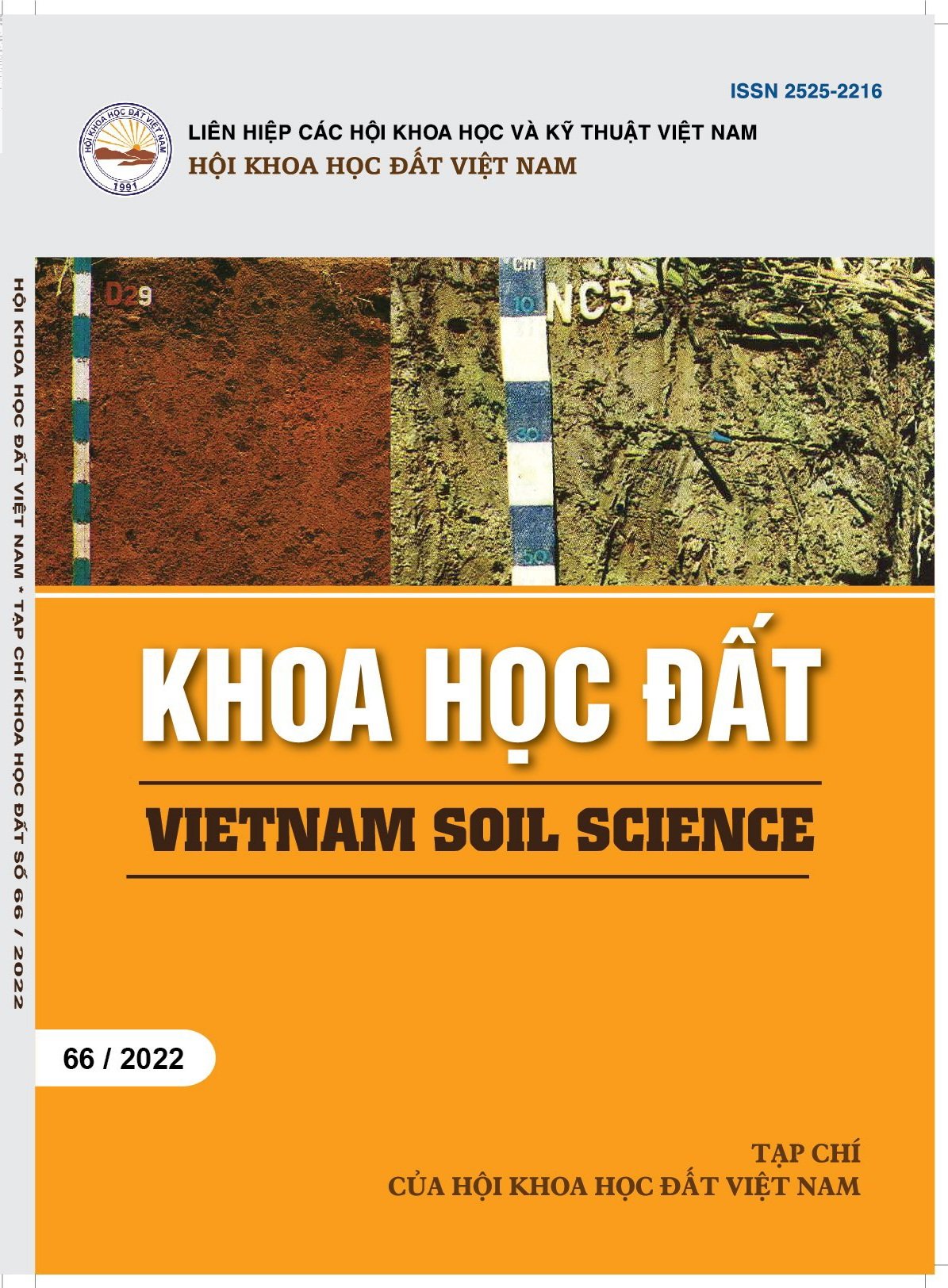Huỳnh Thị Hoài Hương1 , Nguyễn Huyền Trang1 , Trần Thị Tuyết Thu1*
1 Khoa Môi trường, Trường ĐHKHTN, ĐHQG Hà Nội *Email: tranthituyetthu@hus.edu.vn; ĐT: 0912 733 285
TÓM TẮT
Vỏ hàu (Oyster shell) là vật liệu giàu canxi, cho hiệu quả cao trong cải thiện độ chua của đất nhưng chưa phổ biến ở Việt Nam. Nghiên cứu này đã phân tích EDX xác định cấu trúc và thành phần hóa học của vật liệu vỏ hàu tự nhiên (Biocanxi-BC) và sau nung ở 500oC trong 2 giờ (Charcanxi-CC) cho kết quả mật độ vi khoảng hổng và %Ca trong vỏ hàu CC (40,77%) cao hơn trong vỏ hàu BC (37,31%). Do BC dễ áp dụng vào thực tiễn nên được lựa chọn để bố trí 5 công thức thí nghiệm trồng ngô trong bầu đất có bổ sung 0,0%; 0,5%; 1,0%; 1,5% và 2,0% bột vỏ hàu BC nghiền mịn, rây qua rây 2 mm. Sau 45 ngày, pHKCl tăng từ 5,89 tại CT0 (0%) lên 7,34 ở CT1 (0,5%) đến 7,76 ở CT4 (2,0%); Ca2+ tăng từ 4,65 meq/100 g đất (CT0) lên 9,79 – 18,96 meq/100 g đất và chất hữu cơ tăng từ 1,59% (CT0) lên 1,66 – 1,98%, tương ứng với CT1 – CT4; với lượng bổ sung 0,5 – 2,0%, các chỉ tiêu sinh trưởng của cây ngô đều tăng cao hơn so với đối chứng, cụ thể chiều cao thân cây, chiều dài lá và chiều dài rễ tăng thêm theo thứ tự tương ứng với CT1 – CT4 là 0,6 – 1,27 cm; 1,03 – 5,97 cm và 6,9 – 16,9 cm. Triển vọng tận thu vỏ hàu để cải tạo đất là rất khả thi, với lượng bổ sung 0,5 – 1,0% đã tăng rõ hiệu quả cải thiện tính chất đất nên được khuyến nghị áp dụng.
Từ khóa: Vỏ hàu, đất xám feralit, axit hóa đất, cây ngô.
SUMMARY
Using oyster shell in improving gray degraded soil (acrisols) properties and maize growth in Ba Vi, Hanoi
Huynh Thi Hoai Huong1, Nguyen Huyen Trang1, Tran Thi Tuyet Thu1
1 Faculty of Environmental Science, VNU University of Science
Oyster shell is a calcium rich material that is highly effective in decreasing hydrogen ion concentration in intensively acidified soils. The study conducted EDX analysis of natural oyster shell material (Biocanxi-BC) and activated oyster shell under anaerobic heating at 500oC during retention time in 2 hours (Charcanxi-CC) and showed that the structure of CC oyster shells has more micropores and 40.77% Ca concentration higher than 37.31% of BC (~93.28% CaCO3). However, BC is easier to use in the field than CC, so it was selected to carry out experiment towards increasing the soil fertility. Five maize growing experiments conducted in triplicates in each pot with added 0.0%; 0.5%; 1.0%; 1.5%; and 2.0% BC oyster shell powder, through a 2 mm sieve. After 45 days, pHKCl increased from 5.89 at CT0 to 7.34 – 7.76 at CT1-CT4; Ca2+ increased from 4.65 meq.100 g -1 soil to 9.79 – 18.96 meq.100 g -1 soil and SOM also increased from 1.59 to 1.66 – 1.98%; respectively from CT0 to CT4; the growing indivators of maize were higher than the control, specifically the height of the stem increased by 0.6 – 1.27 cm; the leaf length increased by 1.03 – 5.97 cm and especially the root length increased the most by 6.9 – 16.9 cm, respectively CT1 to CT4. The best solution is to gather this calciumrich material as a source of soil added fertilizers to restore soil quality. It has greatly increased the efficiency of soil pH improvement with the addition rate of 0.5 – 1.0% recommended to use in the field.
Keywords: Oyster shell, Gray degraded soils (Acrisols), soil acidification, maize.
Người phản biện: TS. Bùi Huy Hiền
Email: buihuyhien@gmail.com
Ngày nhận bài: 08/7/2021
Ngày thông qua phản biện: 15/7/2021
Ngày duyệt đăng: 15/8/2021
 Tạp chí
Tạp chí



